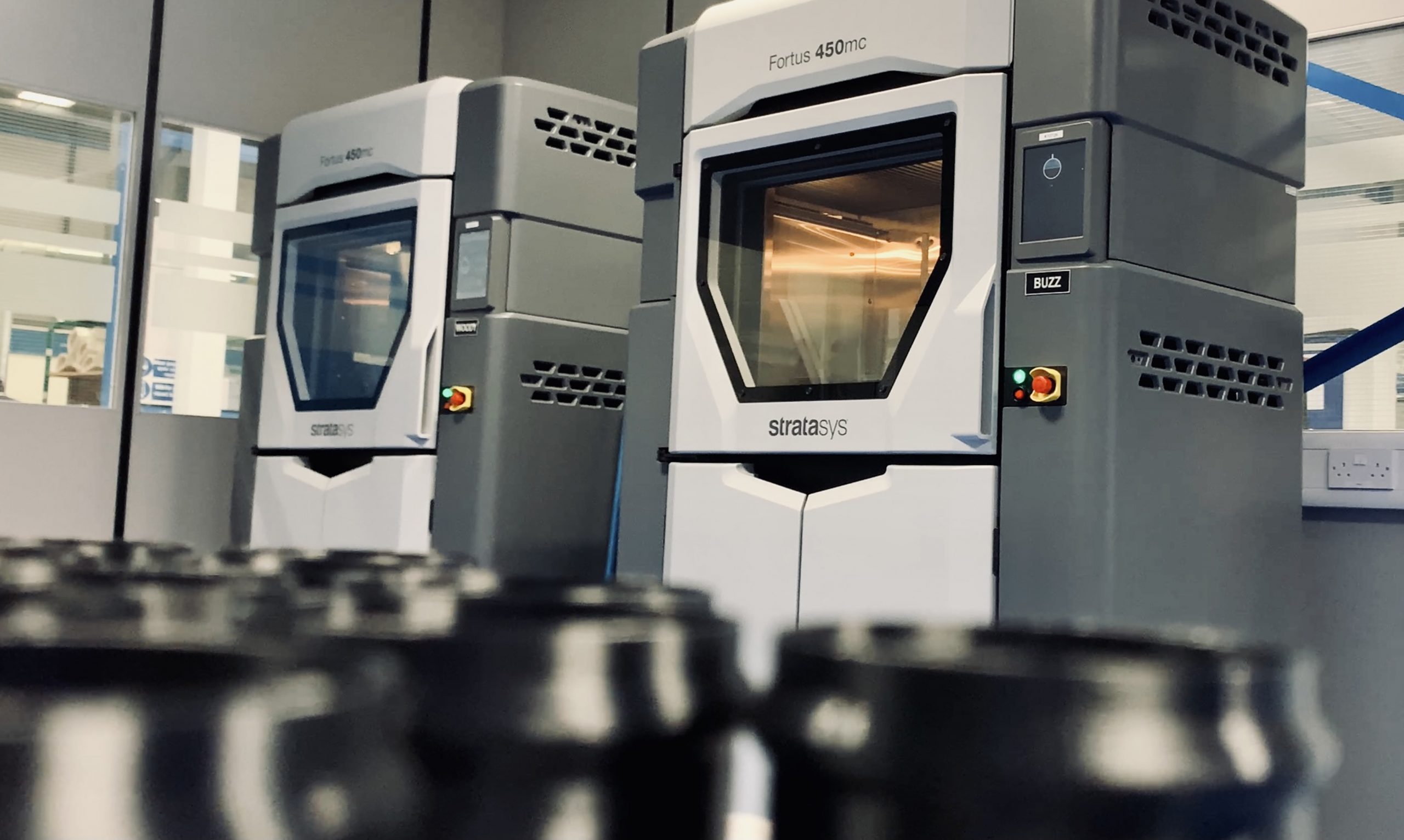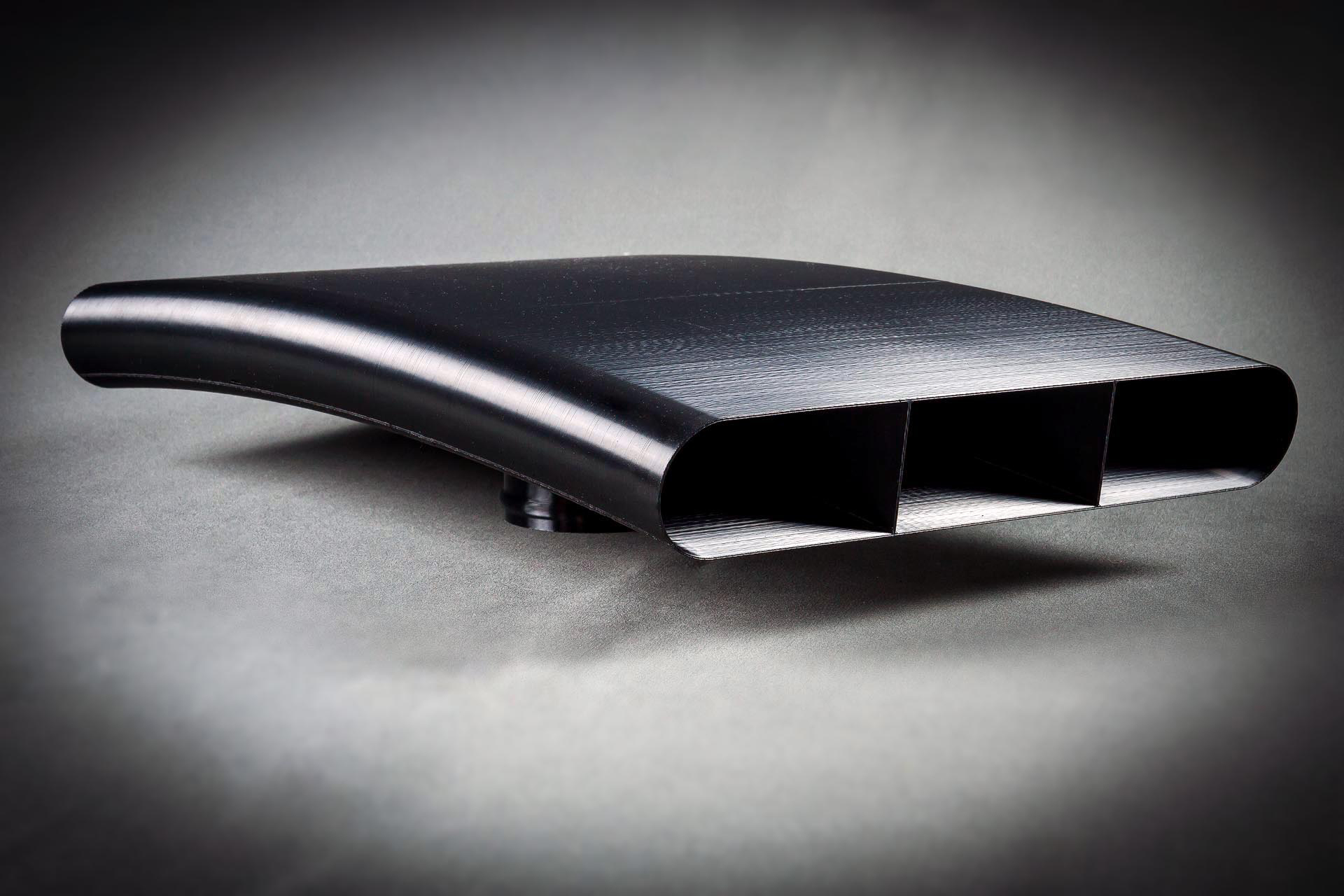Senior Aerospace BWT, a UK-based manufacturer of air distribution systems for the aerospace sector, has installed two industrial-grade Stratasys 3D printers at its Cheshire production site to enable in-house manufacturing of 3D printed interior aircraft parts for its customers.
In addition to installing the two Stratasys Fortus 450mc 3D printers, Senior Aerospace BWT has spent the last two years undertaking a rigorous testing and qualification program of Stratasys’ aerospace-grade ULTEM 9085 resin. Having completed and approved the necessary qualification reports, the company is now fully capable of 3D printing interior aircraft parts to meet the needs of its OEM customers.
“Senior Aerospace BWT is now an industry leader in driving the increased adoption of thermoplastic 3D printed parts for aircraft, enabling our customers to benefit from the significant benefits that this technology delivers,” said Darren Butterworth, CEO of Senior Aerospace BWT. “After two years of intensive R&D work, we have qualified the associated products and processes, which enable us to produce flight-ready parts quickly and cost-effectively for our customers.
“We now have the capability of deploying a robust, accurate, repeatable, and traceable process – which is what the industry demands.”

Bringing 3D printing capabilities in-house
Senior Aerospace BWT first explored the commercial viability of Stratasys FDM 3D printing to produce interior aircraft parts more than four years ago through a technical partnership with a service bureau. In 2018, the company delivered its first duct incorporating a 3D printed part for flight use on regional passenger jets, and has since supplied its customers with hundreds of lightweight, flight-ready interior aircraft components using the technology.
Now, the company has taken the step to invest in its own in-house 3D printing capabilities through Stratasys’ local partner Tri-Tech 3D. Using the Fortus 450mc, Senior Aerospace BWT will print components for use in low-pressure air ducting systems and air handling for the aircraft interiors of its customers within regional, military, private jet, and rotorcraft markets.
Stratasys’ Fortus 450mc 3D printer has previously been deployed for the production of tooling, functional, and prototyping aerospace parts by aircraft design and maintenance firm Marshall Aerospace and Defence Group (ADG). The machine has also been used by Siemens Mobility, the transportation division of German conglomerate Siemens, to aid in train maintenance at its digital rail maintenance center in Dortmund, and delivered a 95 percent cost reduction to French pharmaceutical firm UPSA through 3D printed tooling part replacements.

Cost, weight, and lead time savings
Since using FDM 3D printing in place of conventionally sourced aluminum, Senior Aerospace BWT has observed weight, cost, and lead time savings up to 75 percent for certain parts and small order quantities.
“In many cases, minimum order quantities for off-the-shelf aluminum parts make traditional manufacturing simply unviable when we may only need a handful for one aircraft,” said Butterworth. “If you add to that the small, complex geometries of some parts, it just does not warrant the cost and time to CNC machine them in aluminum.”
A key contributor to these savings is Stratasys’ ULTEM 9085 aerospace-grade resin, of which Senior Aerospace BWT has just completed a two-year testing and qualification process on behalf of its customers. The material met stringent test criteria and retains material traceability required by the aerospace sector from printed part back to raw material.
Possessing a unique high strength-to-weight ratio, ULTEM 9085 has aerospace-grade clearance for its flame resistance, and low levels of smoke and toxicity when it burns.
The material has been standardized for use in Airbus A350 XWB since 2016, landing Spanish aerospace and engineering company Indaero with a number of new contracts with Tier 1 and Tier 2 Airbus suppliers.
In 2019, Stratasys and Ohio-based 3D printing service bureau Rapid Prototype+Manufacturing produced a comprehensive guide detailing the physical and mechanical properties of ULTEM 9085, and its processing parameters. The guidebook was subsequently made available to US 3D printing national accelerator America Makes and its partners in order to promote the material’s use for 3D printing interior components for aircraft.
In the future, Senior Aerospace BWT plans to expand its 3D printing services offering beyond the aerospace sector and into automotive and defense applications. The firm will also look to bolster its production capacity with the installation of more Fortus 450mc 3D printers, as part of its strategy to invest in fluid conveyance product development and manufacturing processes, while increasing return on investment.
Subscribe to the 3D Printing Industry newsletter for the latest news in additive manufacturing. You can also stay connected by following us on Twitter and liking us on Facebook.
Looking for a career in additive manufacturing? Visit 3D Printing Jobs for a selection of roles in the industry.
Featured image shows having completed and approved the necessary qualification reports, Senior Aerospace BWT is now fully capable of 3D printing interior aircraft components to meet the needs of aircraft manufacturers. Photo via Stratasys.


